Functional Coating and Surface Engineering Laboratory (P5) is the fastest growing division of the Research and Development Laboratory for Aerospace Materials. It is equipped with modern equipment that enables research on the implementation of innovative solutions for serial production in the aviation industry.
The main equipment of this laboratory includes:
Vacuum plasma spray system under reduced pressure MultiCoat® LPPS®: The Sulzer Metco MultiCoat system is a device for the production of ceramic layers on hot parts of aircraft engines. The device enables the plasma spraying process to be carried out under reduced pressure (LPPS, Thin Film) and physical vapour deposition with a plasma torch (PS-PVD). In the PS-PVD and LPPS Thin Film processes, an appropriately modified high-energy 03CP burner by Sulzer Metco is used. The process can be carried out with the use of five plasma gases: argon, hydrogen, helium, nitrogen and oxygen. During the layering process, the powder spray material is introduced into the plasma stream and then applied to the surface of the substrate material. The powder forming the layer is fed through a system of two nozzles connected with feeders to the plasma stream in the front part of the plasma torch. The thickness of the obtained coatings is in the range of 10-300 µm. The device allows the substrate to be preheated and its surface cleaned with an electric arc (Transfer Arc). The apparatus is used for scientific and research purposes. The ability to control the position of the burner and the coated element enables the coating of elements of various sizes and complex geometry. The MultiCoat system enables the creation of an interlayer on the matrix of the MCrAlY multi-component alloy and a ceramic thermal barrier coating layer (TBC), used in aviation technology to protect against the effects of exhaust gases in the hot part of aircraft engines. The modular structure and the possibility of precise control of the parameters of the plasma spraying process determine the wide range of applications of the device in thermal spraying technology and allow for obtaining coatings with various characteristics.
Smart Coater device for physical vapour deposition of TBC coating thermal barriers with electron beam evaporation. Smart Coater by ALD Vacuum Technologies GmbH is a device for the production of thermal barrier coatings TBC (thermal barrier coatings) by the physical deposition of the gas phase (EB-PVD) on the elements of the hot part of aircraft engines, e.g. I and II degree turbine blades. The material in the form of ceramic blocks, usually zirconium oxide stabilized with yttrium oxide, is melted and evaporated by means of an electron beam and deposited on the surface of the base material - usually nickel superalloy. Smart Coater is a device with a compact structure enabling research and development works aimed at developing new, as well as modifying and verifying the existing technologies of coating thermal barrier deposition. The design of the device ensures full compatibility with its industrial versions. The process conditions developed with the use of the device can be implemented by Original Equipment Manufacturers (so-called OEMs) who have equipment designed for highly efficient production of coating thermal barriers on elements of aircraft engines or stationary turbines. Smart Coater is a device unique on a global scale, functionally in line with the latest trends in the technology of top layer production in the aviation industry.
Scratch Tester - CSM Instruments - scratch test with a diamond indenter under constant or variable load, determining the mechanical properties and adhesion to the substrate of diffusion layers and protective coatings with a depth or thickness of up to 1 mm.
Nano- and microhardness tester - CSM Instruments - scratch test of diffusion layers and protective coatings up to 10 mm deep or thick, measurement of nano- and microhardness, tests of mechanical properties (Young's modulus, adhesive strength) and tribological (wear resistance) properties.
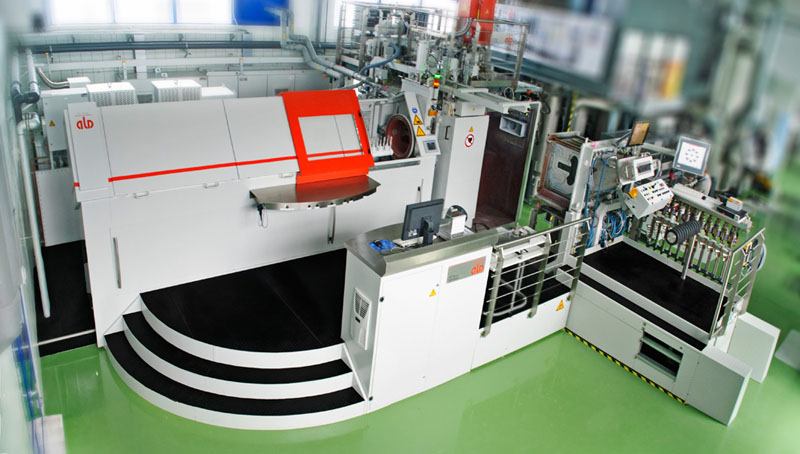
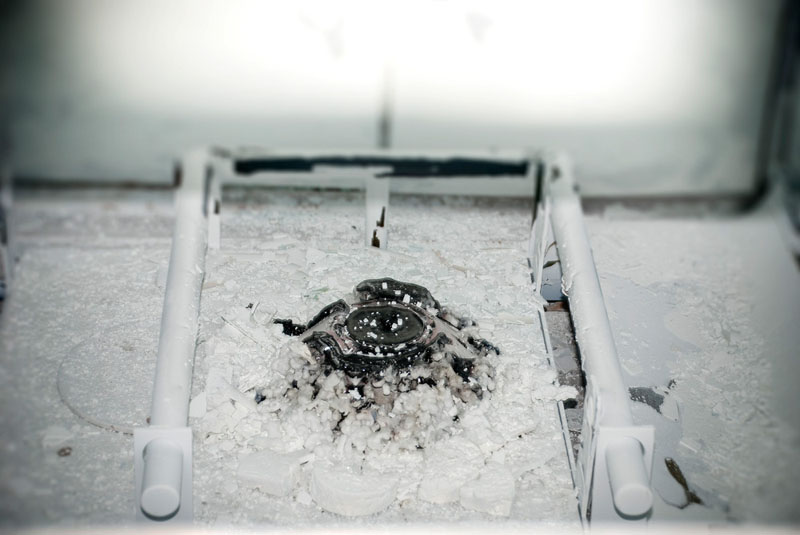

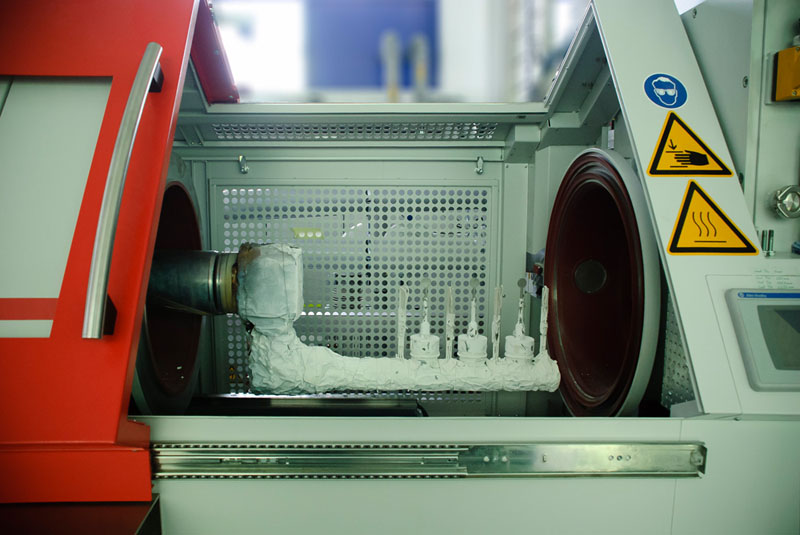
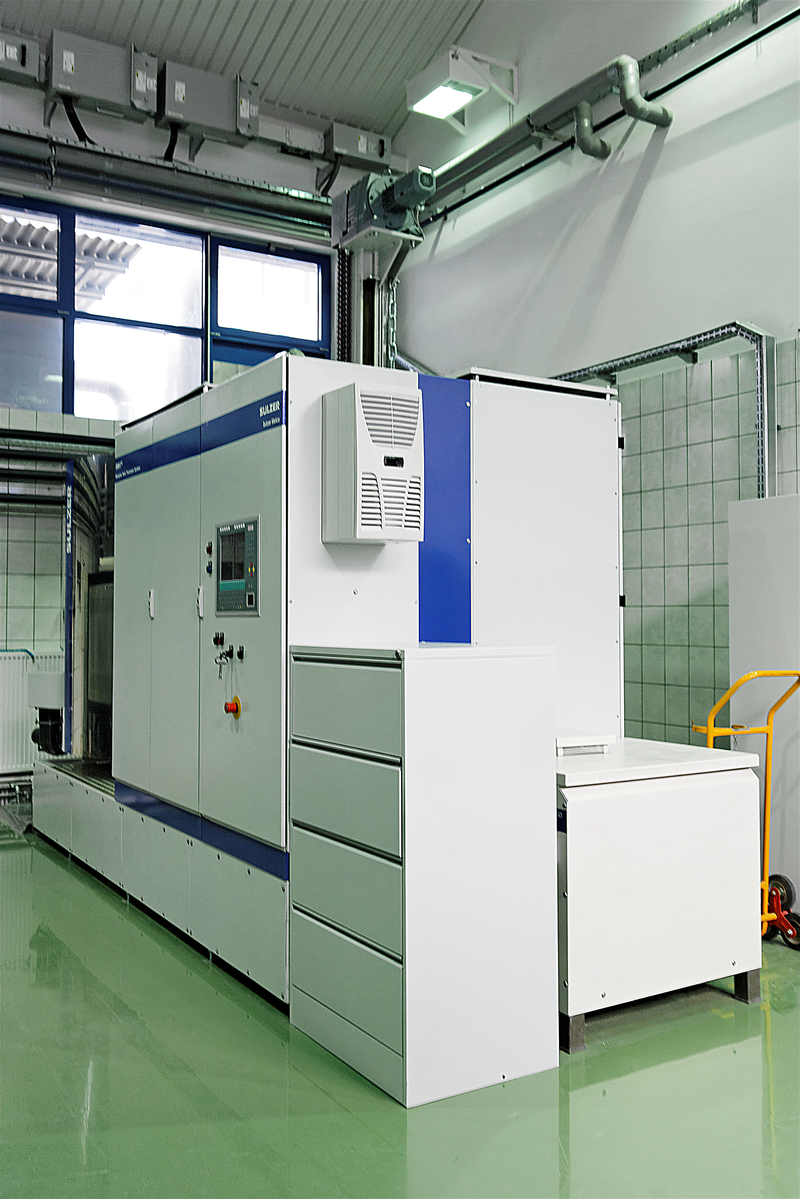
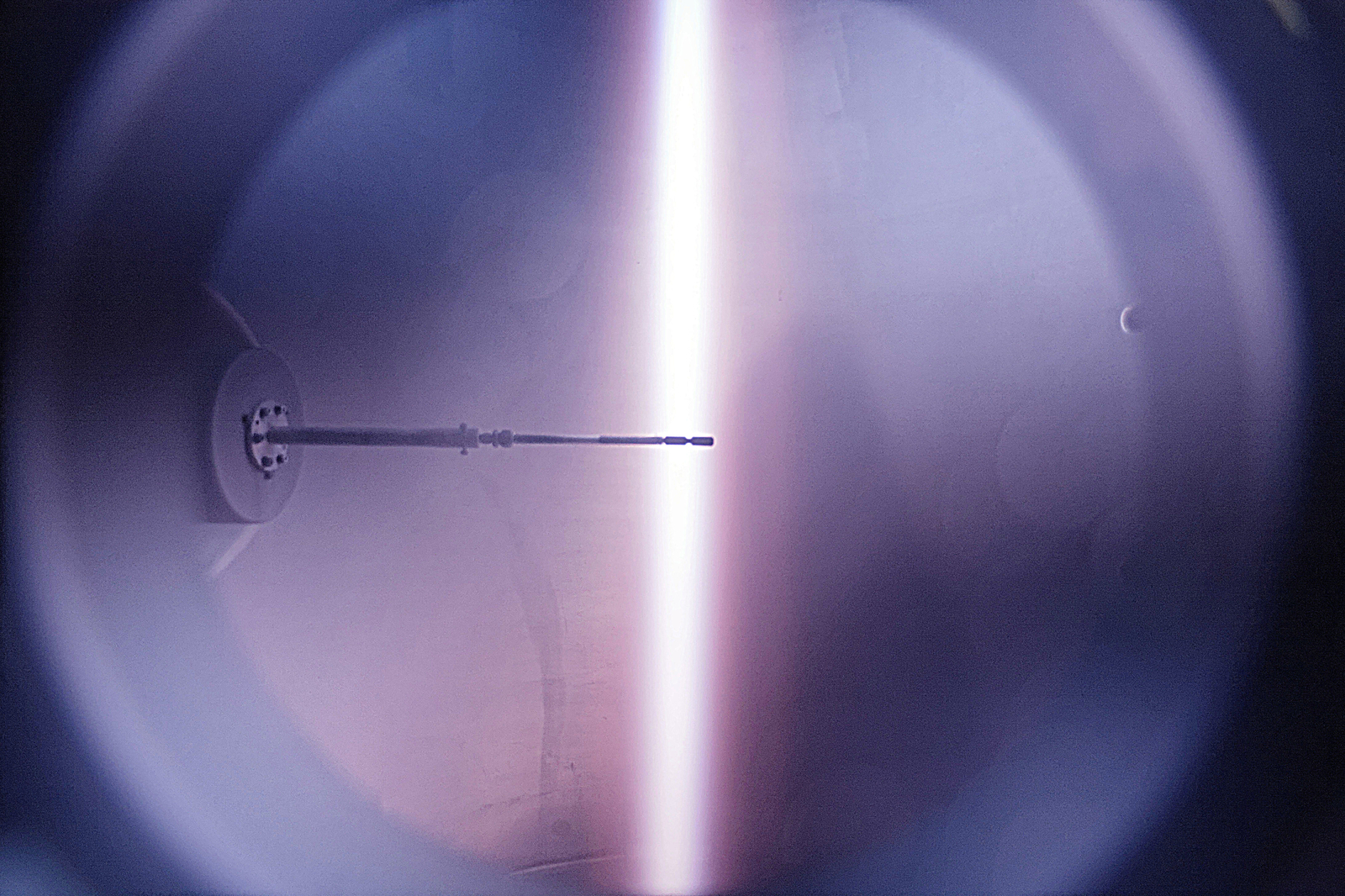
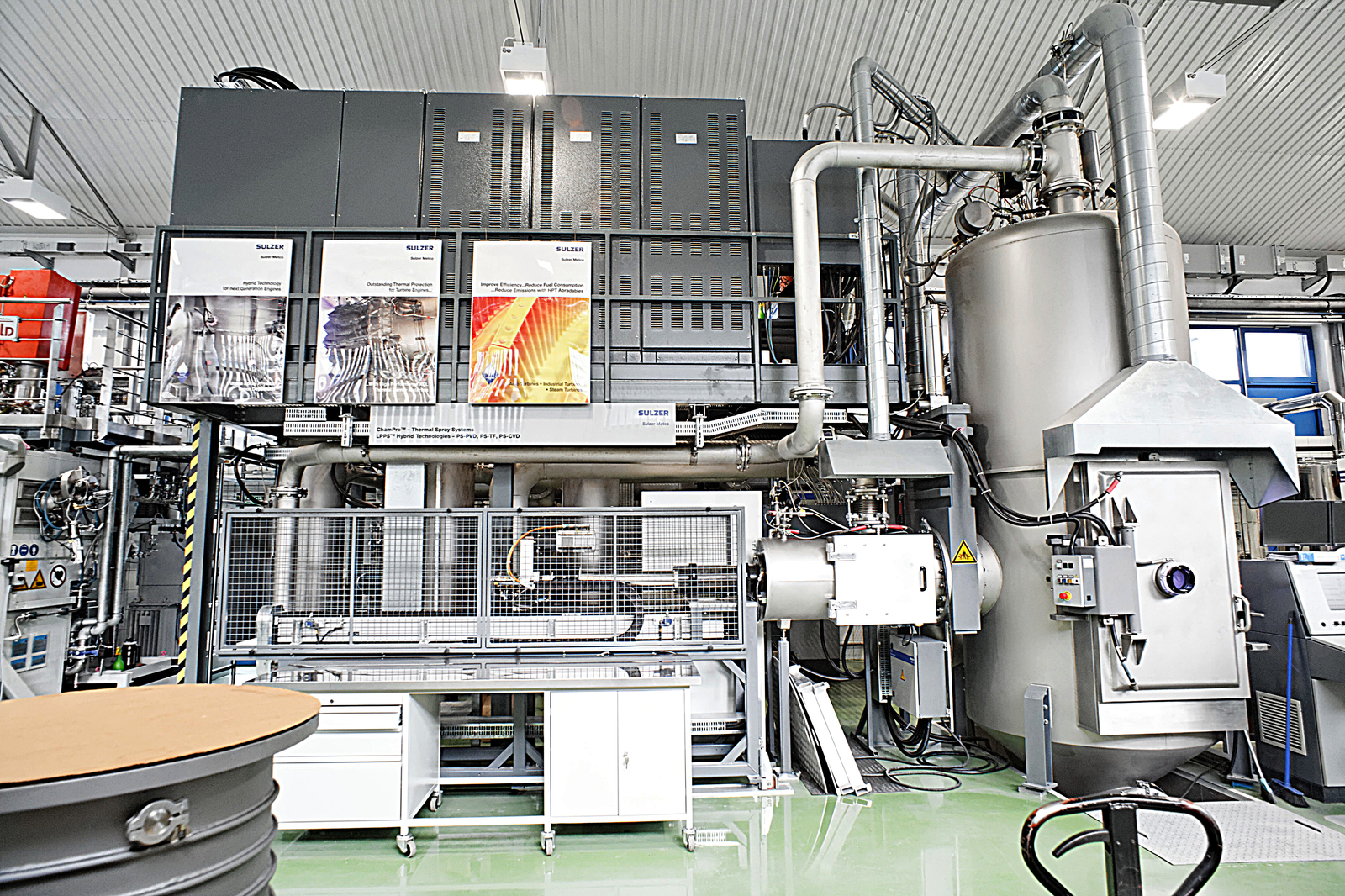
In the P5 laboratory, basic and application research is carried out in the field of corrosion protection of aluminium and magnesium alloys used in aviation technology. Basic research concerns the kinetics of the corrosion process of aluminium alloys and their phases in acid solutions in the presence of inorganic corrosion inhibitors - tungstate (VI), molybdate (VI), sodium orthovanadate (V). At the same time, research is carried out to assess the degree of influence of these inhibitors on the dissolution kinetics of anodic coatings. Their goal is to replace the toxic chromium (VI) oxide - used in anodic coating removal solutions, with another, non-toxic corrosion inhibitor. The elimination of toxic chromium (VI) compounds from chemical and electrochemical surface treatment processes is a major challenge currently facing the aviation industry.
Basic research is also carried out in the field of protection against high-temperature corrosion of creep-resistant nickel superalloys used for elements of hot parts of aircraft engines blades of the 1st and 2nd row of high-pressure turbine. They concern the production of electroplated palladium coatings, which constitute the metallic interlayer in the coating thermal barriers, and the chemical removal of aluminide coatings from the surface of the turbine blades of the aircraft engine.
The Laboratory of Corrosion and Electrochemical Processes also carries out application research on the production of oxide coatings on the foundry base and plastically processed light metal alloys - magnesium and aluminium. Coatings on a substrate of magnesium alloys are produced by the process of glow discharge. It is a variant of the anodizing process, the characteristic feature of which is a high voltage value - above the breakdown voltage of the oxide coating (160 - 200 V). Under these conditions, electrical discharges occur in the shell. The temperature in the discharge channel reaches several thousand ° C - chemical compounds are formed, among others. base metal with electrolyte anions as a protective coating. The equipment of the laboratory and cooperation with the Faculty of Chemistry of the Silesian University of Technology and Rzeszów University of Technology enables the production of protective coatings up to several dozen mm thick, characterized by particularly good corrosion resistance. Modification of the properties of these coatings is carried out by introducing molybdenum disulfide - the friction coefficient is reduced and the wear resistance increases under friction conditions.
Oxide coatings with high frictional wear resistance are produced on the substrate of aluminium alloys by hard anodizing (type III in accordance with the requirements of MIL-A-8625F). The correct selection of the chemical composition of the electrolyte, temperature and values of the current parameters of the anodizing process ensures their good wear resistance under friction conditions. Good corrosion resistance and improvement of the tribological properties of the produced anodic coatings are obtained by impregnating with Teflon particles. The value of the coefficient of friction of the coating is reduced and, at the same time, the degree of wear of the anodized element under friction conditions is reduced.
The laboratory is equipped with apparatus and installations designed and made as part of the Magoxy and Demonstrator + projects. Research on a laboratory scale is ensured by general-purpose programmable power supplies: EA-PSI 9360-30 2U (3 kW, 30 A, 360 V) and Flex KraftPowercon (15 kW, 60 V, 300 A). The laboratory also has power supplies designed to conduct glow discharge oxidation processes by Plating Electronic GmbH pe861UA-500-10-24-S (5 kW, 24 A, 500 V) and pe86CWU-550-212-480-SR / PM (336 kW, 550 V, 212 A).
The laboratory has baths for industrial processes of glow discharge and hard anodizing with a capacity of 1 m3, enabling electrochemical treatment of elements with dimensions <800 mm and smaller - with a capacity of 120 and 60 dm3 for laboratory tests, also baths with a capacity of 120 dm3 used for surface preparation processes before electrochemical treatment (Fig. 1).

Fig. 1. Stand for the production of protective coatings on the substrate of light metal alloys: a) fluorescent oxidation and hard anodizing baths, b) impulse power supply
The Laboratory equipment enables the characterization of the basic features and properties of protective coatings produced on the substrate of metal alloys: thickness by the non-destructive method (Dualscope FMP100 Fischer meter), weight by the weight method, wear resistance under friction conditions (TABER® Rotary Platform Abrasion Tester Model 5135) and corrosion (including salt mist - SC salt / climatic chamber / KWT-1000 Weisstechnik, with electrochemical methods - Bio-Logic SP-300 potentiostat, weight method). Corrosion tests of metal alloys in water solutions are also carried out - susceptibility to intergranular corrosion of stainless steel, acid-resistant steels and aluminium alloys, susceptibility of aluminium alloys to layer corrosion, susceptibility of metal alloys to pitting corrosion, also basic tests with electrochemical DC and AC methods as well as the gravimetric method.
Basic and application research at the Laboratory of Corrosion and Electrochemical Processes is carried out as part of projects financed by the National Science Center, the National Center for Research and Development, and also Rzeszów University of Technology (subsidy for the development of young scientists):
- Sonata "Electrochemical analysis of the corrosion process of the Al2Cu intermetallic phase in acidic solutions in the presence of inorganic corrosion inhibitors" 2016/23/D/ ST5/01343
- Demonstrator + pt. "Testing of critical components of an aircraft engine with increased operational parameters" UOD-DEM-1-557/001
- Applied Research Program entitled "Technology for the production of corrosion-resistant layers on magnesium alloys by means of glow discharge" PBS1/B5/ 5/2012
- "Wear resistance under friction conditions of anodic coatings produced on the substrate of the EN-AW 5005 alloy in the hard anodizing process" DS/M.MC.18.007
- "Analysis of the kinetics of the corrosion process of aluminium in an acidic solution containing inorganic corrosion inhibitors" DS./M.MC.17.003
- "Electrochemical analysis of the corrosion process of aluminium in an acidic solution containing molybdate ions" U-782/DS/M
- "Kinetics of dissolution of oxide layers on the substrate of aluminium alloy 2024 in the presence of corrosion inhibitors (excluding chromates)" U-612/DS/M
- "Attempt to develop the composition of the bath for removing the anodic coating from aluminium without disturbing the substrate, containing no chromium (VI) compounds" U-567/DS/M




